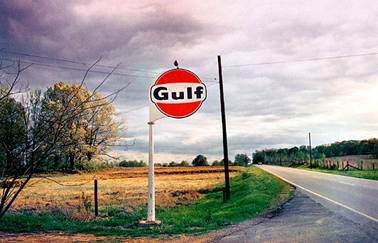William Eggleston
dal 3/5/2007 al 18/8/2007
Segnalato da
3/5/2007
William Eggleston
Pinakothek der Moderne, Munich
Portfolios. His photographs are characterised by a masterly interpretation of colour. He sees in colour and translates it into virtuoso, pictorial compositions that are intensified through the elaborate technique of dye transfer. Eggleston's photographic style is borrowed from the aesthetics of the snapshot. He photographs a particular moment in time, capturing whatever happens to seize his attention. Curated by Inka Graeve Ingelmann.

Portfolios
curated by Inka Graeve Ingelmann
William Eggleston is considered one of the great legends of photography. For
over 30 years now the work of the nestor of artistic colour photography has
exercised a strong influence over contemporary photographic art. His
portfolio "Southern Suite", which was recently acquired with the aid of PIN,
provides an opportunity to present four of the artist's most important early
portfolios for the first time.
William Eggleston (*1939 Memphis, Tennessee) grew up on his parents' cotton
plantation and started taking photographs as a teenager. During his studies
at Vanderbilt University he took an intensive interest in photography and
was inspired by the work of Walker Evans und Henri Cartier-Bresson in
particular. After initial experimentation with black and white photography
he decided to concentrate on working solely in colour from 1965 onwards.
During a trip to New York Eggleston made the acquaintance not only of such
leading contemporary photographers as Diane Arbus, Lee Friedlander and Gary
Winogrand but also of the influential photography curator John Szarkowski.
Nine years later, Szarkowski organised a solo exhibition for him at New
York's Museum of Modern Art, a show that was to lay the foundations for
Eggleston's fame. To this day it is regarded as a milestone in photography -
as is his 'William Eggleston's Guide' which appeared at the same time and is
now available as a reprint. In the course of his career as a photographer
Eggleston has published more than twenty portfolios and art books and his
works have gone on display in numerous exhibitions. He still undertakes
journeys around the globe, documenting his impressions in comprehensive
photo projects. In addition to the many prizes he has received, he was
granted the Hasselblad Award for his life's work and also the Getty Images
Lifetime Achievement Award (2004).
Eggleston's oeuvre comprises some ten thousand photographs, of which only
very few have been enlarged, exhibited and published to this day. His
photographs are characterised by a masterly interpretation of colour. He
sees in colour and translates it into virtuoso, pictorial compositions that
are intensified through the elaborate technique of dye transfer. Eggleston's
photographic style is borrowed from the aesthetics of the snapshot. He
photographs a particular moment in time, capturing whatever happens to seize
his attention: trivial, casually charming things or places that he charges
atmospherically and intensifies into an ongoing visual novel of the American
South. However, his photographs are never documents; but rather autonomous
pictures that seek more than anything to satisfy themselves. Laconically,
wittily, sometimes melancholically, at other times full of bitter irony,
they recount the ugliness and beauty of the world around us, the surface of
images and their hidden mysteries. In doing so, each photograph becomes part
of an ever-growing, complex cosmos of pictures in which all the subjects are of equal value. "Democratic" is how Eggleston defines this view of the world.
In 1974, even before his trailblazing and controversially debated exhibition
at the Museum of Modern Art, Eggleston published his first portfolio >14
Pictures<, in retrospect a prelude to 'William Eggleston's Guide' that was
to appear two years later. In loose succession the pictures assembled here
manifest Eggleston's specific view of the world, his own particular approach
to photographic art that defies conventional standards. It is one he
continues in his portfolios "Troubled Waters" (1980) and "Southern Suite"
(1981). In 1983 Eggleston was commissioned to photographs of "Graceland",
the last refuge of Elvis Presley, for a tourist guidebook. Against normal
practice he was forced to work under cramped conditions at night using
artificial light. The sale of the album with his pictures in it turned out
to be short-lived. In 1984 Eggleston published his own selection of eleven
photographs. They present an insightful psycho-gram of Presley and his
posthumous glorification.
Opening may 4, 2007
Pinakothek der Moderne
Kunstareal | Barer Str. 29 - Munich



